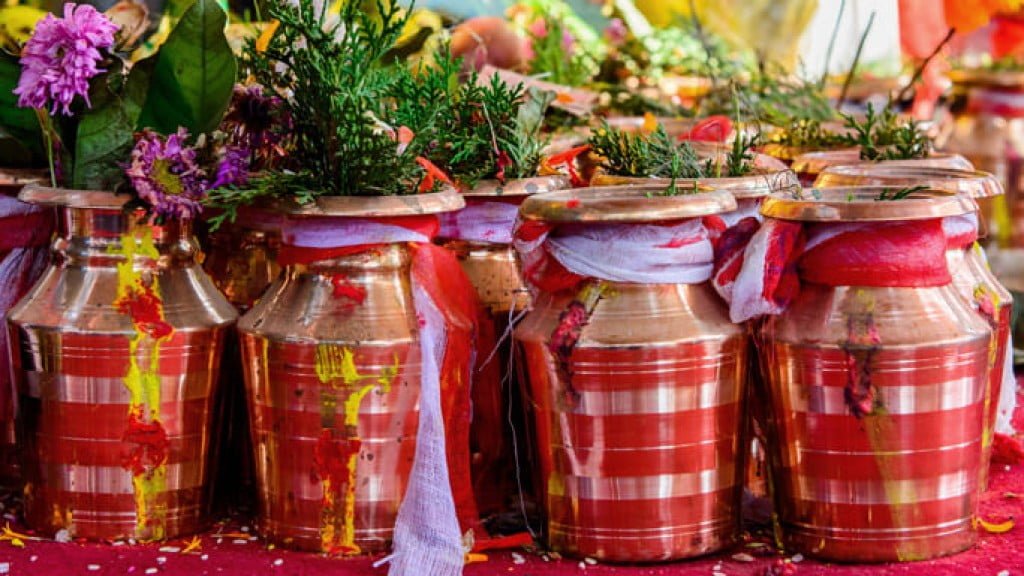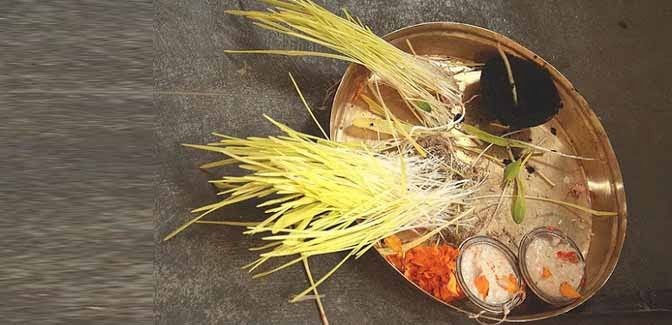Biggest Festival Dashain in Nepal
28 Jul 2023 5 min to read

Nepal, a small nation with breathtaking natural beauty, is a diverse tapestry of cultures, traditions, ethnicities, languages, and religions. It boasts 124 languages, 142 ethnic groups, and 10 major religions. Nepal’s geographical diversity ranges from majestic Himalayan peaks to lush valleys and fertile plains. Despite this diversity, the country fosters unity and respect, with people embracing and celebrating each other’s differences. The biggest festival Dashain in Nepal is joyfully celebrated by both Hindus and Buddhists. It is a shining example of harmony that exists in Nepal’s multi-cultural and multi-linguistic society.
Dashain, Nepal’s grandest and most significant festival, is celebrated with enthusiasm and magnificence for 15 days. It symbolizes the victory of good over evil and brings families together. People decorate their homes, wear new clothes, and exchange gifts. This joyous occasion occurs in the Nepali month of Asoj (September/October), which unifies Hindus and Buddhists. The Newar Buddhists call it Mohani and celebrate it by putting auspicious Mohani Sinha (black tika) from the hands of elders on their foreheads. It showcases the harmonious spirit of Nepal by weaving together diverse religious practices into a shared celebration.

The festival falls between September and October and commences on the ‘Pratipada Shukla Pakshya’ (bright lunar fortnight) of the month of Asoj/Ashwin. It concludes on ‘Purnima’, the auspicious full moon day. During these 15 days, several significant days mark the celebration, including:
Day 1: Ghatasthapana
On the first day of Ghatasthapana in Nepal, the Dashain festival begins with the Kalash ritual—filling it with holy water and barley-sewn cow dung. The Kalasha (pot) is placed in a room away from sunlight and worshipped twice daily. By the tenth day, the grown yellowish “Jamara” grass (around 6 inches long) is bestowed by elders upon younger family members during the Tika ceremony.

Day 7: Phulpati
During Dashain, on the seventh day known as Phulpati or Saptami, people clean and decorate their homes while the Nepal Army holds a grand parade at Tundikhel in Kathmandu. Traditionally, the Magars of Gorkha carry royal Kalash, Jamara, banana stalks, and sugarcane tied with red fabrics from Gorkha to Tundikhel, covering 105 miles. The Nepalese Army displays a glorious parade and fires weapons in honor of Phulpati’s arrival, which is then taken to Hanuman Dhoka Palace. Additionally, the government follows a unique tradition of bringing the royal ‘Dashain Doli’ from Gorkha to Kathmandu Durbar Square, accompanied by Brahmins and gun salutes.

Day 8: Maha Ashtami
On Maha Ashtami, the eighth day of Dashain, devotees perform rituals and worship the fierce manifestation of the goddess Durga, Kali. Traditionally, animal sacrifices were offered to appease the goddess, and the night is known as “Kal Ratri” or the dark night. However, in modern times, some people choose to avoid animal sacrifices due to increased awareness of animal cruelty and opt to offer various vegetables and delicacies during this significant day of the festival.

On the ninth day, Maha Navami, the festival reaches its peak with elaborate celebrations. Devotees throng the temples of Durga and Kali to offer prayers and honor the goddess. The exclusive opening of Taleju Temple on this day attracts locals and visitors from all walks of life, fostering a vibrant and spiritual atmosphere in the heart of Kathmandu. Additionally, people also worship machinery equipment, including vehicles like bikes, cars, and buses, seeking protection from accidents throughout the year. Some castes continue performing sacrifices on this day, as they did on Ashtami.

Day 10: Vijaya Dashami
The main festival Vijaya Dashami, is a day of blessings and festivities, highlighting the rich cultural heritage and joyous spirit of Nepal. On the tenth day, Vijaya Dashami or Dashain, people receive blessings and Tika (a mixture of yogurt, rice, and red vermillion powder) from seniors, along with Jamara and monetary gifts. Both Hindus and Buddhists celebrate by putting red Tika and Jamara. Newar ethnicities celebrate by putting Mohani (black tika), red tika, and Jamara. The day is marked by wearing new clothes, enjoying bamboo swings, Ferris wheels, and flying colorful kites. Dashain serves as a joyful occasion for family reunions, fostering emotional bonds, and exchanging celebratory gifts, making it the most anticipated and significant festival in Nepal.

Day 15: Kojagrat Purnima
This final day of Dashain is dedicated to celebrating wealth and prosperity. Rituals, prayers, and offerings are performed to seek divine blessings and express gratitude for the blessings received. On Kojagrat Purnima, the Jamara sown on the first day is flown into the river, officially marking the end of the festival. In some parts of Nepal, people receive Tika only on Vijaya Dashami, while in others, the tradition extends to Kojagrat Purnima. Throughout these days, people visit their relatives to receive Tika and Jamara.

Dashain, the grandest festival of Nepal, signifies the victory of good over evil and the celebration of family unity. With its vibrant rituals, joyful gatherings, and auspicious blessings, Dashain holds a special place in the hearts of Nepalese people, fostering a sense of cultural pride and spiritual significance.





